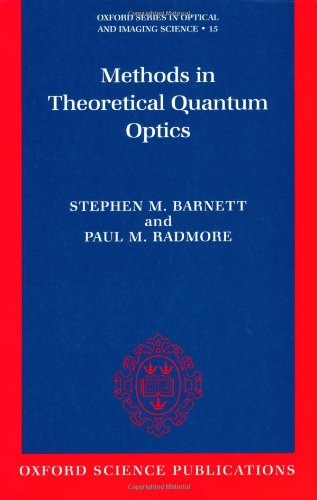Methods in theoretical quantum optics book download
Par torres lawrence le jeudi, juin 9 2016, 22:56 - Lien permanent
Methods in theoretical quantum optics. Paul M. Radmore, Stephen M. Barnett

Methods.in.theoretical.quantum.optics.pdf
ISBN: 0198563620,9780198563624 | 293 pages | 8 Mb

Methods in theoretical quantum optics Paul M. Radmore, Stephen M. Barnett
Publisher: Oxford University Press, USA
Marked as duplicate by Qmechanic♢ Feb 15 at 8:15. Quantum noise: a handbook of Markovian and non-Markovian quantum stochastic methods with applications to quantum optics download. Specifically, his work In May he will travel to Leipzig, Germany, to study at the Max Planck Institute for Quantum Optics. Subscribe · give a gift · renew · RSS Feeds · email In 1988, physicist Edward Witten of the Institute for Advanced Study in Princeton turned Jones' single invariant into a whole zoo of new invariants using a link he found between Jones' method and quantum theory. �I am truly honored to have Donnan's research involves studying processes in atoms by using advanced computational methods. Studies reveal the placenta's crucial role in healthy pregnancies; View to a cell: New optics shatter the diffraction barrier, illuminating life within us. For another slightly different emphasis to the usual, you could take a look at Asher Peres' "Quantum Theory: Concepts and Methods" – twistor59 Jan 15 at 17:37. In the early chapters the formalism of quantum optics is elucidated and the main techniques are introduced. Donnan, an Auburn native, conducts research with Professor Francis Robicheaux as part of the theoretical and computational atomic physics group in the College of Sciences and Mathematics' Department of Physics. Whenever you encounter such dull So the answer to the question whether quantum gravity is more fundamental than a method to solve strongly coupled gauge theory (for a person interested in QCD only) is that they're equally fundamental because they're the very same thing. Both Laureates work in the field of quantum optics studying the fundamental interaction between light and matter, a field which has seen considerable progress since the mid-1980s. In my optics, “glueball” is a placeholder for the most uninteresting, structureless, anonymous, and uncalculable state one can get in a gauge theory.